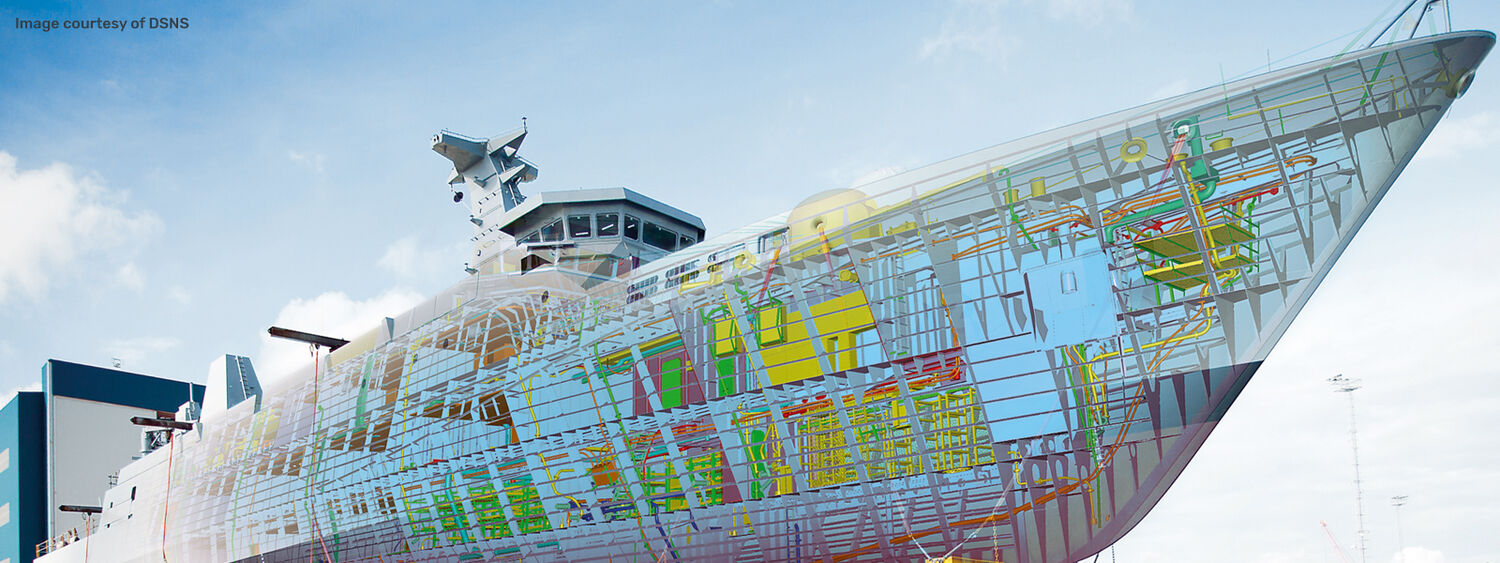
The dualistic goals of CAD/CAM software in shipbuilding: supporting innovative designs and facilitating production.
Written by Ludmila Seppälä
Posted on August 08, 2019
In early the 1980s, CAD/CAM software was in the earliest stages of rising as an emerging innovation. Bottlenecks included underdeveloped hardware, the ingrained practice of using 2D drawings for designs, and a lack of tools in 3D software packages.
One of the founders of CADMATIC, Mr. Andries Staal, describes it as follows: “Back then, it was difficult to convince shipyards and design offices to invest in CAD/CAM systems – they were used to producing 2D drawings, and it was their main means of communication with production. Spending money on hardware, software and time to create a 3D model just for the sake of producing the same 2D drawings did not make much sense to anybody, even taking into consideration the increased level of accuracy and the ability for simultaneous work by all disciplines in the same 3D model. The future focus was on automated output and direct connections with CNC machines.”
Nowadays, 3D CAD/CAM software packages are the main tools in any shipyard or design office in the marine industry. Shipbuilders, in particular, have a need to handle complex engineering projects, produce error-free and customizable outputs for production automatically, gain access to and include design recourses that are distributed around the globe on their design projects, and ease everyday work.
CAD software is tasked with the facilitation of both design and production: while the tool must be capable of facilitating complex and often artistic designs, it also has to ensure production and aid designers to do various checks. Unleashing the imagination of ship designers requires a software program that allows designers to create 3D designs and evaluate the designs in different ways before production. It is possible to extract all data from a ship’s digital twin and virtually walk around a vessel and visualize 3D and all other production data, including for example work building sequence animations, augmented reality 3D models or visualizations of spools on assembly table.
Shipbuilding-specific software packages, such as CADMATIC, include numerous tools for speeding up simple and repetitive design tasks, and leave room for designers to create new design solutions and think out of the box. Specification-driven 3D design rules and production checks ensure that no production errors are made. These checks include, for example, bending machine parameters for piping, colored elongation lists for shell plate production, collision checks, and even specific rules applied to piping materials and components based on the space they are located in, such as a pipes that penetrate ballast tanks.
The constant challenge to add more functionality to 3D design remains a CADMATIC focus. The need for smooth and accurate production that is as automated as possible sometimes challenges shipyards to update their ways or working and to consider investing in new production lines to boost performance.
Usually, the first automation efforts are targeted at bulk operations. Routine and time-consuming tasks, such as steel cutting, shell plate production, as well as profile and pipe cutting and bending are automated first. Advanced shipyards invest in workshop automation, production lines, and new machinery. CADMATIC often participates in such projects and develops interfaces to the latest CNC machines, postprocessor interfaces, and links with PLM/PDM solutions. In several cases, CADMATIC has cooperated with shipyards to come up with new ways of accommodating the developed technology. These cases included, for example, end customers such as Flensburger yard in Germany, Tanjong Kling (Jurong) yard in Singapore, Meyer Turku yard in Finland and Tsuneishi shipyard in Japan.
In the future, we expect even more possibilities for production automation: 3D printing, automation of non-repeatable processes, robot welding, and the use of new materials. All these trends are already visible and attempts at using the new technologies are ongoing. It is only a matter of time before they break through the resistance of outdated practices and high implementation costs. New generations of shipbuilders require CAD to be a reliable facilitation tool to achieve their goals; CADMATIC aims to assist them to meet their high expectations.
